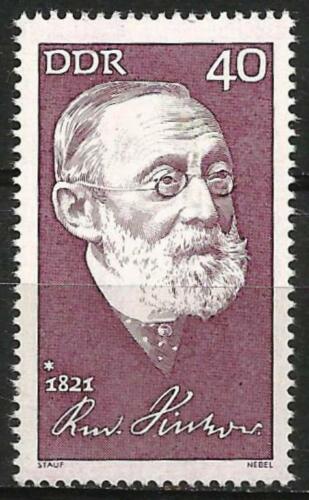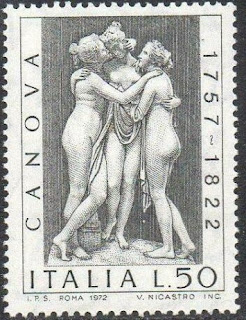Here are some events that happened on October 23rd. It could be an event or a person that died or was born on that day
1801 Born: Albert Lortzing, German singer-songwriter and actor (d. 1851)
Gustav Albert Lortzing (23 October 1801 – 21 January 1851) was a German composer, actor and singer. He is considered to be the main representative of the German Spieloper, a form similar to the French opéra comique, which grew out of the Singspiel.
His first singspiel, Ali Pascha von Janina, appeared in 1824, but his fame as a musician rests chiefly upon the two operas Zar und Zimmermann (1837) and Der Wildschütz (1842).
Zar und Zimmermann was received with very little enthusiasm by the public of Leipzig. However, at subsequent performances in Berlin there was a much more positive reaction. The opera soon appeared on all the stages of Germany, and today is regarded as one of the masterpieces of German comic opera. It was translated into English, French, Swedish, Danish, Dutch, Bohemian, Hungarian and Russian. The story is based around Tsar Peter I 'The Great' of Russia, who travelled to Germany, Holland and England disguised as a carpenter in order to gain first-hand technical knowledge he believed necessary for his country's economic progress, such as modern shipbuilding.
Der Wildschütz was based on a comedy by August von Kotzebue, and was a satire on the unintelligent and exaggerated admiration for the highest beauty in art expressed by the bourgeois gentilhomme.
Of his other operas, Der Pole und sein Kind, produced shortly after the Polish insurrection of 1831, and Undine (1845) are notable.
Lortzing was popular in Berlin and after his death, a memorial statue was erected in the Tiergarten in Berlin.
Stamp from Berlin depicting Albert Lortzing
1813 Born: Ludwig Leichhardt, German-Australian explorer (d. 1848)
Friedrich Wilhelm Ludwig Leichhardt, known as Ludwig Leichhardt, (23 October 1813 – c. 1848) was a German explorer and naturalist, most famous for his exploration of northern and central Australia.
Leichhardt's contribution to science, especially his successful expedition to Port Essington in 1845, was officially recognised. In 1847 the Geographical Society, Paris, awarded its annual prize for geographic discovery equally to Leichhardt and a French explorer, Rochet d'Héricourt; also in 1847, the Royal Geographical Society in London awarded Leichhardt its Patron's Medal; and Prussia recognised his achievement by granting him a king's pardon for having failed to return to Prussia when due to serve a period of compulsory military training. The Port Essington expedition was one of the longest land exploration journeys in Australia, and a useful one in the discovery of excellent pastoral country.
Leichhardt's accounts and collections were valued, and his observations are generally considered to be accurate. He is remembered as one of the most authoritative early recorders of Australia's environment and the best trained natural scientist to explore Australia to that time. Leichhardt left a record of his observations in Australia from 1842 to 1848 in diaries, letters, notebooks, sketch-books, maps, and in his published works.
A detailed map of Ludwig Leichhardt's route in Australia from Moreton Bay to Port Essington (1844 & 1845), from his Original Map, adjusted and drawn... by John Arrowsmith was ranked #8 in the ‘Top 150: Documenting Queensland’ exhibition when it toured to venues around Queensland from February 2009 to April 2010. The exhibition was part of Queensland State Archives’ events and exhibition program which contributed to the state’s Q150 celebrations, marking the 150th anniversary of the separation of Queensland from New South Wales.
Harsh criticism of Leichhardt's character was published some time after his disappearance and his reputation suffered badly. The fairness of this criticism continues to be debated. Leichhardt's failed attempt to make the first east–west crossing of the Australian continent may be compared with the Burke and Wills expedition of 1860-61, which succeeded in crossing from south to north, but failed to return. However, Leichhardt's success in making it to Port Essington in 1845 was a major achievement, which ranks him with other successful European explorers of Australia.
Australia has commemorated Ludwig Leichhardt through the use of his name in several places: Leichhardt, a suburb in the Inner West of Sydney, and the surrounding Municipality of Leichhardt; Leichhardt, a suburb of Ipswich; the Leichhardt Highway and the Leichhardt River in Queensland; and the Division of Leichhardt in the Australian Parliament. The name of the eucalyptus tree species Corymbia leichhardtii commemorates Leichhardt.
The insect Petasida ephippigera is commonly known as Leichhardt's grasshopper, and an alternative name for the largetooth sawfish (Pristis pristis) is Leichhardt's sawfish.
On 23 October 1988, a monument was erected beside Leichhardt's blazed tree at Taroom by the local historical society and tourism association to celebrate Leichhardt's 175th birthday and the Bicentenary of Australia. The tree was listed on the Queensland Heritage Register in 1992.
Joint issue stamps from Germany and Australia
1817 Born: Pierre Larousse, French lexicographer and author (d. 1875)
Pierre Athanase Larousse (October 23, 1817 – January 3, 1875) was a French grammarian, lexicographer and encyclopaedist. He published many of the outstanding educational and reference works of 19th-century France, including the 15 volume Grand dictionnaire universel du XIXe siècle.
From 1848 to 1851 he taught at a private boarding school, where he met his future wife, Suzanne Caubel (although they would not marry until 1872). Together, in 1849, they published a French language course for children. In 1851 he met Augustin Boyer, another disillusioned ex-teacher, and together they founded the Librairie Larousse et Boyer (Larousse and Boyer Bookshop). They published progressive textbooks for children, and instruction manuals for teachers, with an emphasis on developing the pupils' creativity and independence. In 1856 they published the New Dictionary of the French Language, the forerunner of the Petit Larousse, but Larousse was already starting to plan his next, much larger project. On December 27, 1863 the first volume of the great encyclopedic dictionary, the Grand dictionnaire universel du XIXe siècle (Great Universal 19th-Century Dictionary), appeared. It was praised by Victor Hugo and became a classic. It is still highly respected in its modern, revised form. In 1869 Larousse ended his partnership with Boyer and spent the rest of his life working on the Great Dictionary. The dictionary was finished (15 volumes, 1866–76; supplements 1878 and 1890), by Larousse's nephew Jules Hollier in 1876, after Larousse's death (in Paris in 1875) from a stroke caused by exhaustion.
The publishing house Éditions Larousse still survives, but was acquired by Compagnie Européenne de Publication in 1984, Havas in 1997, Vivendi Universal in 1998 and the Lagardère Group in 2002.
French stamp depicting Pierre Larousse
1910 Died: Chulalongkorn, Thai king (b. 1853)























